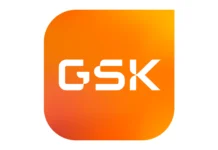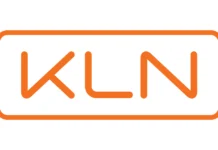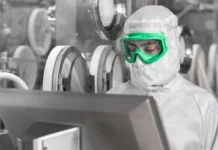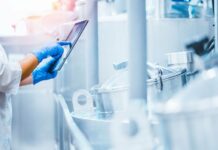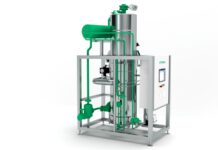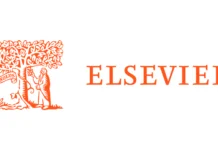An analysis by BCC Research shows that the market for analytical laboratory instruments will grow at a compound annual growth rate (CAGR) of 6.3% from 2023 to 2028, rising from $60.9 billion in 2023 to $82.5 billion by 2028.
The full scope of the study includes a thorough examination of the diagnostic tools used in elemental, separation, and molecular analysis. The report talks about many end-user industries, including food testing, environmental testing, materials, forensic science, life science, chemical and petrochemical, oil and gas, and petrochemicals. It also talks about other industries, such as environmental testing, materials, and forensic science. The report estimates the market size to be millions of dollars. The market is expected to grow from 2022, which is the starting year, to 2028. The study also looks at growth prospects in key regions, mainly North America, Europe, Asia-Pacific, and the Rest of the World. It does this by including important countries in each area to show regional growth prospects. Furthermore, the study includes a part that specifically looks at the sustainability environment of the global analytical laboratory equipment market and rates companies’ performance using a number of ESG (Environment, Social, and Governance) standards.
It’s important to note that the chemistry and petroleum industries are both using more and more analysis lab tools as a result of the strategic need to deal with the loss of fossil fuel sources. With more focus on making more things in these fields, scientific tools are being used by more and more people. On top of that, India’s pharmaceutical manufacturing business is growing very quickly right now, which means that the market for diagnostic laboratory instruments has some great new possibilities. The growth in the pharmaceutical business not only shows that more products are being made, but it also shows how important it is to have accurate analysis tools to make sure that products are safe and follow the rules. Additionally, the global market is about to go through huge changes because of the addition of cutting-edge technologies such as nanotechnology and artificial intelligence. The combination of this gelling and the rising demand for portable analytical instruments is going to change the rules in the analytical laboratory instrument market, allowing new ideas and better efficiency to spread across many industries.
The main things that drive the production of diagnostic laboratory instruments around the world
High Growth in the Biopharmaceutical Industry: The biopharmaceutical industry is becoming a big force in the analytical laboratory equipment market, which is why it is growing quickly. As progress in biotechnology speeds up, there is a greater need for advanced analysis tools to help with both creation and production in this field. The market is being held back by analytical tools that are very important for making sure the quality, safety, and effectiveness of biotech goods.
Companies spend a lot of money on R&D
A good rise in R&D spending by companies in many different industries is a big thing that’s pushing the analytical laboratory equipment section. Businesses are spending more on research and development (R&D) to stay competitive in a world that changes very quickly. This shows how important creativity and technological progress are. As more money is put into research, the need for analytical laboratory equipment rises. This is because businesses are looking for cutting-edge solutions to improve their quality control and product development. With this trend, the market is growing, and people are also making a promise to stay on the cutting edge of science and technology progress.
Segmentation by type seems to be used in the whole process of making analytical laboratory instruments. This creates different groups that can meet different analytical needs. Elements Analysis Instruments, which include technologies like atomic absorption spectrometers, mass spectrometers, and X-ray fluorescence analyzers, are used to figure out the make-up and structure of elements in a sample. Molecular analysis tools, like infrared spectrometers, nuclear magnetic resonance spectrometers, and chromatographs, are used to figure out the features and molecular structure of substances. It is possible to separate elements based on their physical or chemical traits with the help of separation analysis instruments. These instruments include centrifuges, electrophoresis systems, and filter devices. Finally, there is a group called “Other Instruments,” which includes tools like pH meters, telescopes, and scales that don’t really fit into any of the other categories. This complete division makes sure that everyone has a deep understanding of the different tools that are needed for analysis processes in labs.
It’s important to keep in mind that application specialization in the field of analytical laboratory instruments includes a wide range of sectors and businesses, each of which uses these instruments for different purposes. As it turns out, analytical lab tools are very important for studying biological molecules, tissues, cells, and animals in the life sciences field, which includes genetic engineering, biotechnology, medical tests, and drugs. Chemical, petrochemical, and even oil and gas industries use these instruments for quality control, chemical synthesis, environmental monitoring, exploration, and production. They can also be used to look at the composition, purity, and properties of other materials as well as chemicals and fuels. With the ability to find allergens, contaminants, chemicals, and nutrients in food, tools are used in food tests to help with food safety, nutrition, and quality assurance. Analytical tools are used in water and wastewater uses to do things like treating water, checking the cleanliness of water, and controlling wastewater by looking at physical, chemical, and biological factors. And finally, the “Other” group includes uses in investigative science, study, and teaching. This shows how flexible analytical laboratory tools can be in a lot of different areas. This division gives a complete picture of how important these gadgets are for meeting the different needs of different businesses.






